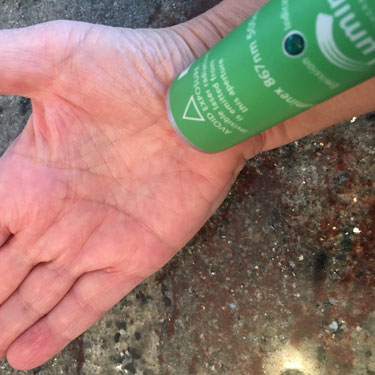NIH Review of Cold Laser
The content on this page has been reproduced from: https://www.ncbi.nlm.nih.gov/pmc/articles/PMC4272231/
 Low-level laser therapy (LLLT) has been actively used for nearly 40 yr, during which time it has been known to reduce pain, inflammation, and edema. It also has the ability to promote healing of wounds, including deep tissues and nerves, and prevent tissue damage through cell death. Much of the landmark research was done by the National Aeronautics and Space Administration (NASA), and these studies provided a springboard for many additional basic science studies.
Low-level laser therapy (LLLT) has been actively used for nearly 40 yr, during which time it has been known to reduce pain, inflammation, and edema. It also has the ability to promote healing of wounds, including deep tissues and nerves, and prevent tissue damage through cell death. Much of the landmark research was done by the National Aeronautics and Space Administration (NASA), and these studies provided a springboard for many additional basic science studies.
MECHANISMS OF ACTION
From a historical perspective we now know that light has a biologic effect, but what we need to know is how energy from lasers and LEDs work on a cellular level and what the optimal light parameters are for different uses.8
The power plant of cells is located in the mitochondria that are able to produce cellular energy or adenosine triphosphate (ATP) from pyruvate and oxygen. When tissues are stressed or ischemic, mitochondria make their own mitochondrial nitric acid (MtNO), which competes with oxygen. The MtNO bind to cytochrome C oxidase (CcO) that displaces oxygen. This subsequently reduces ATP synthesis and increased oxidative stress, which leads to inflammation. Hypoxic or stressed tissues are affected by LLLT in four stages:
(1) light energy is absorbed by cytochrome C oxidase, triggering several downstream effects;
(2) nitric oxide is released;
(3) ATP is increased; and
(4) oxidative stress is reduced. These biochemical intermediates affect components in the cytosol, cell membrane, and nucleus that control gene transcription, cell proliferation, migration necrosis, and inflammation. Cells in blood and lymph, which have been light activated, can travel a distance for systemic effects.
APPLICATIONS
The four common targets for LLLT are:
- L – lymph nodes to reduce edema and inflammation.
- I – site of injury to promote healing and reduce inflammation.
- N – nerves to induce analgesia.
- T – trigger points to reduce muscle spasms.
LLLT is a transcutaneous procedure with no invasive portion. The physician determines the correct synchronizations of continuous or pulsed laser emission. Penetration depth is determined by wavelength and power.
The U.S. Navy research determined 810 nm to be optimal for penetration. Treatment times are in the range of 30 s to 1 min, but there are many areas treated for comprehensible protocol, which often takes approximately 30 min to perform. For stimulating repair and decreasing inflammation, 2.5 Hz pulse is recommended, while a continuous beam is ideal for analgesia and tender points.
The Federal Drug Administration (FDA) approved the use of LLLT in 2003. In some states, a prescription is mandatory before treatment.
Side effects and complications can result from traditional treatments for musculoskeletal pathology. Nonsteroidal antiinflammatories can cause ulcer disease, hypertension, bleeding, and cardiac events. Steroids (oral and/or epidural) can result in infections (including epidural), bleeding, ulcers, avascular necrosis, and tissue fragility. Studies have found LLLT to have no side effects or adverse events beyond those reported for placebo.
With over 4000 basic science research and clinical studies according to pubmed.gov, and low complication rate, LLLT should be considered as a first-line treatment option for conditions such as acute neck or back pain, tendinitis, plantar fasciitis, mild carpal tunnel sndrome, and ligamentous sprains. Its safety profile provides a persuasive argument, with the added benefits of accelerated healing, tissue remodeling, pain relief, and decreased inflammation. LLLT subsequently has been accepted by both the British and Canadian health services. Although approved by the FDA, LLLT has not been recognized or accepted by Medicare or insurance companies because it is viewed as investigational treatment.
Clinical practice guidelines of the American Academy of Orthopaedic Surgeons (AAOS) in 2008 on treatment of carpal tunnel syndrome included laser treatment but carried no recommendations for or against its use because there is insufficient evidence. The literature on LLLT for the treatment of lymphedema, wound healing, prevention of oral mucositis, or for pain demonstrates inconsistent results and methodological weaknesses as per the Blue Cross Blue Shield of Kansas Medical Policy, March 12, 2013. More up-to-date, prospective studies, using newer treatment guidelines by clinicians, are needed to provide a complete picture of efficacy and cost-effectiveness.
Want to learn more?
Do you have any questions, or would like to see if we can help? Contact our Branford practice today to schedule your first appointment!
CONTACT US »
